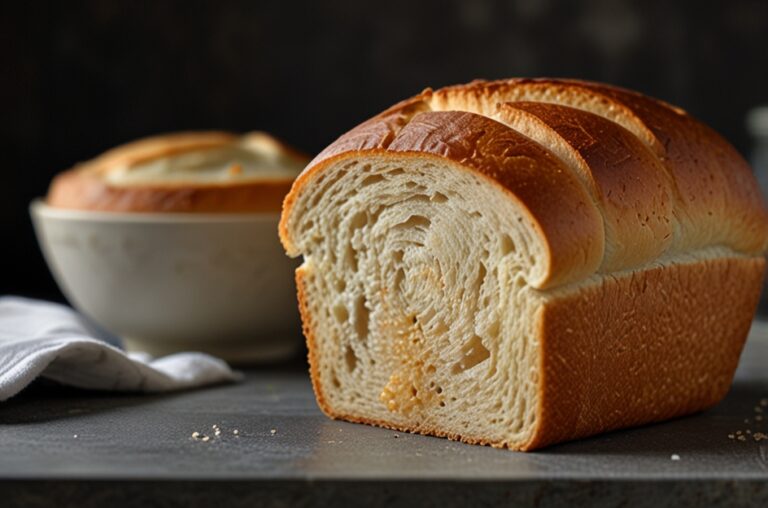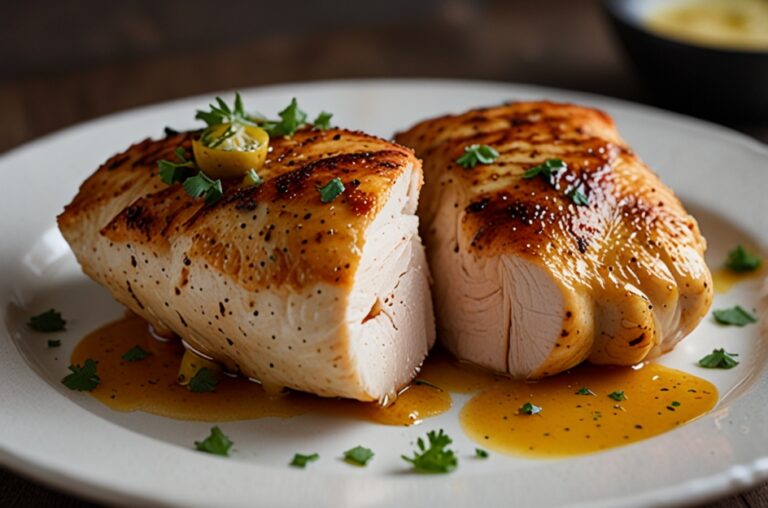What are spring rolls made of?
Spring rolls are one of those foods that seem to have universal appeal. Whether you’re enjoying a crisp, golden fried version or the fresh, translucent rice paper variety, there’s something truly magical about that first bite. But what exactly are spring rolls made of? While their origins are rooted in Chinese cuisine, spring rolls have taken on countless forms across different cultures, with ingredients that vary from simple vegetables to more luxurious fillings like shrimp. In this article, we’ll dive deep into the ingredients that make up shrimp spring rolls, a popular variation loved for its delicate combination of fresh flavors and textures.
Whether you’re a seasoned home cook or a curious food enthusiast, understanding what goes into shrimp spring rolls will not only satisfy your curiosity but might even inspire you to make them yourself. Let’s roll up our sleeves (pun intended) and explore the world of shrimp spring rolls!
Table of Contents
| Sr# | Headings |
|---|---|
| 1 | What Are Spring Rolls? |
| 2 | Traditional Ingredients in Spring Rolls |
| 3 | Shrimp Spring Rolls: A Closer Look |
| 4 | Wrapping Techniques and Types |
| 5 | Fresh vs. Fried: What’s the Difference? |
| 6 | Sauce Pairings: The Perfect Dip |
| 7 | Nutritional Benefits of Shrimp Spring Rolls |
| 8 | How to Make Shrimp Spring Rolls at Home |
What Are Spring Rolls?
Spring rolls, as their name suggests, were originally created as a celebration of the spring season in China. With the arrival of fresh vegetables after winter, people would wrap these veggies in thin sheets of dough or rice paper, making a light and refreshing snack. Today, the definition of spring rolls has expanded, and you’ll find different variations of them in many parts of Asia, including Vietnam, Thailand, and the Philippines. Each region brings its own twist to the dish, resulting in a delightful range of flavors, textures, and ingredients.
Spring rolls can be served either fresh or fried, with fillings that range from crunchy vegetables to savory meats, making them highly versatile. But what really sets shrimp spring rolls apart? It’s the addition of tender, juicy shrimp, which elevates the roll from a humble veggie wrap to something far more indulgent.
A spring roll is like a blank canvas—you can fill it with almost anything. Think of it like a burrito in Mexican cuisine. While burritos are often associated with beef or chicken, you can add rice, beans, veggies, and even shrimp if you’re feeling adventurous. The same holds true for spring rolls: whether fresh or fried, the choice of filling is all about personal preference and creativity.
Traditional Ingredients in Spring Rolls
When talking about traditional spring rolls, it’s important to understand that their ingredients have evolved significantly over time. Initially, spring rolls were filled with whatever fresh vegetables were available, often including:
- Cabbage: Adds crunch and bulk to the filling.
- Carrots: For a hint of sweetness and texture.
- Mushrooms: Shiitake or wood ear mushrooms provide a deep, umami flavor.
- Bean Sprouts: A staple in many Asian dishes, bean sprouts contribute freshness.
- Rice Noodles: These thin, delicate noodles add a soft texture to the otherwise crunchy filling.
Traditionally, meat was not a common ingredient in spring rolls. However, as the dish spread to different regions and adapted to local tastes, protein like pork, chicken, and shrimp became more common.

What makes these rolls fascinating is their adaptability. For instance, in Vietnam, the focus is often on fresh ingredients like herbs, lettuce, and shrimp wrapped in rice paper, while in China, spring rolls are more likely to be deep-fried and filled with a combination of vegetables and meat. The fillings are bound together by seasoning, usually consisting of soy sauce, oyster sauce, garlic, and pepper.
Shrimp Spring Rolls: A Closer Look
Shrimp spring rolls are a special variation that adds a seafood twist to the traditional recipe. The key ingredient, of course, is shrimp. But what makes shrimp such a popular choice for spring rolls? First, shrimp is incredibly versatile. It can be boiled, grilled, or even fried, and it pairs beautifully with the crunchy vegetables typically found in spring rolls.
The shrimp itself is usually cooked until tender, seasoned with a hint of salt and pepper, and then combined with other ingredients like:
- Vermicelli noodles: These fine, translucent noodles provide a soft, chewy contrast to the shrimp.
- Cucumbers and Lettuce: Fresh, crisp vegetables that add a cooling element to the spring rolls.
- Herbs: In many variations, especially Vietnamese, fresh herbs like mint, cilantro, or Thai basil are added for a burst of flavor.
- Rice Paper Wrappers: The wrapper is what gives shrimp spring rolls their distinctive look. Made from rice flour and water, the paper is soft, slightly chewy, and almost translucent once wet.
An important tip when making shrimp spring rolls is to avoid overcooking the shrimp. Overcooked shrimp becomes rubbery and can detract from the delicate textures of the other ingredients. Shrimp that is perfectly cooked has a slightly firm texture and a naturally sweet flavor, which complements the other fresh ingredients.
Just like adding juicy toppings to a sandwich elevates its flavor, adding shrimp to a spring roll turns it into a more refined dish. The subtle sweetness of the shrimp blends harmoniously with the freshness of the vegetables, while the rice noodles add a light, starchy element that balances the whole roll.
Wrapping Techniques and Types
The beauty of shrimp spring rolls also lies in their presentation. Wrapping a spring roll may seem simple, but there’s a bit of finesse required to make it look professional. There are two main types of spring roll wrappers: wheat flour wrappers and rice paper wrappers.
- Wheat flour wrappers are typically used for fried spring rolls. These wrappers are thin, slightly stretchy, and become golden and crispy when fried.
- Rice paper wrappers, on the other hand, are often used for fresh rolls. They are delicate and require a gentle touch, but their translucent quality allows the vibrant colors of the shrimp and veggies inside to shine through.
How to Wrap a Shrimp Spring Roll:

- Prepare the Wrapper: If you’re using rice paper, dip it in warm water for a few seconds until it softens. Lay it flat on a clean surface.
- Add the Filling: Place a small handful of vermicelli noodles, some lettuce, herbs, and a couple of shrimp near the bottom third of the wrapper.
- Fold and Roll: Fold the bottom edge over the filling, tuck in the sides, and then roll it up tightly but gently.
It’s a bit like wrapping a gift—the more practice you have, the neater your rolls will become.
Fresh vs. Fried: What’s the Difference?
Spring rolls can be enjoyed either fresh or fried, and the choice largely depends on personal preference. Both versions have their own unique appeal, but how do they differ in terms of ingredients and preparation?
Fresh Shrimp Spring Rolls:
Fresh rolls are light, healthy, and bursting with raw, crunchy vegetables. They’re often served cold or at room temperature, making them a refreshing snack or appetizer, especially during warm weather. The shrimp is usually boiled or poached, which keeps the flavors clean and simple. Fresh rolls are typically paired with a light dipping sauce, such as peanut or hoisin sauce.
Fried Shrimp Spring Rolls:
Fried rolls, on the other hand, are crispy and savory, making them a perfect indulgence. The shrimp is often sautéed or stir-fried with the vegetables before being wrapped in a wheat flour wrapper and fried to golden perfection. These rolls are typically served hot, with a tangy vinegar-based dipping sauce.
If fresh spring rolls are like a crisp salad, fried spring rolls are more like a satisfying, crunchy snack. Both are delicious in their own right, and the choice often comes down to what you’re in the mood for.
Sauce Pairings: The Perfect Dip
No spring roll experience is complete without a flavorful dipping sauce. In fact, the right sauce can elevate the flavors of your shrimp spring rolls to the next level. Here are a few popular sauce pairings:
- Peanut Sauce: A creamy and slightly sweet sauce made with peanut butter, soy sauce, garlic, and a touch of lime. It adds richness to fresh shrimp spring rolls without overpowering the delicate flavors.
- Hoisin Sauce: A thick, savory-sweet sauce that’s a bit like Asian barbecue sauce. Hoisin is often mixed with peanuts or chili for added texture and heat.
- Nuoc Cham: This is a classic Vietnamese dipping sauce made from fish sauce, lime juice, sugar, and chili. It’s tangy, salty, and slightly sweet, which complements the freshness of the rolls.
- Sweet Chili Sauce: A popular dipping sauce for fried spring rolls, sweet chili sauce is mildly spicy with a touch of sweetness. It provides a great balance to the savory flavors in fried rolls.







